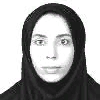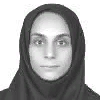International Journal of Image, Graphics and Signal Processing (IJIGSP)
IJIGSP Vol. 5, No. 12, 8 Oct. 2013
Cover page and Table of Contents: PDF (size: 187KB)
Analysis of Electroencephalogram Signals in Different Sleep Stages using Detrended Fluctuation Analysis
Full Text (PDF, 187KB), PP.49-55
Views: 0 Downloads: 0
Author(s)
Index Terms
Detrended Fluctuation Analysis, Electroencephalogram, Nonlinear Behavior, Scaling exponents, Sleep Stages
Abstract
Scaling behavior is an indicator of the lack of characteristic time scale, and the existence of long-range correlations related to physiological constancy preservation. To investigate the fluctuations of the sleep electroencephalogram (EEG) over various time scales during different sleep stages detrended fluctuation analysis (DFA) is studied. The sleep EEG signals for analysis were obtained from the Sleep-EDF Database available online at the PhysioBank. The DFA computations were performed in different sleep stages. The scaling behavior of these time series was investigated with detrended fluctuation analysis (window size: 50 to 500). The results show that the mean values of scaling exponents were lower in subjects during stage 4 and standard deviation of scaling exponents of stage 4 was larger than that of the other stages. In contrast, the mean value of scaling exponents of stage 2 was larger, while a small variation of scaling exponent is observed at this stage. Therefore, DFA has a more stable behavior in stage 2, whereas the random variability and unpredictable behavior of DFA can be observed in the stage 4. In conclusion, scaling exponent indices are efficacious in quantifying EEG signals in different sleep stages.
Cite This Paper
Ateke Goshvarpour, Ataollah Abbasi, Atefeh Goshvarpour,"Analysis of Electroencephalogram Signals in Different Sleep Stages using Detrended Fluctuation Analysis", IJIGSP, vol.5, no.12, pp.49-55, 2013. DOI: 10.5815/ijigsp.2013.12.07
Reference
[1]Chokroverty S, Thomas RJ, Bhatt M. Atlas of sleep medicine. 1st ed. Philadelphia, PA: Elsevier; 2005.
[2]Stiller JWgos, Postolache TT. Sleepwake and other biological rhythms: functional neuroanatomy. Clinics in Sports Medicine , 2005, 24: 205-235.
[3]Werth E, Achermann P, Borbély AA. Fronto-occipital EEG power gradients in human sleep. Journal of Sleep Research , 1997, 6: 102-112.
[4]Aserinsky E, Kleitman N. Regularly Occuring Periods of Eye Motility, and Concomitant Phenomena, During Sleep. Science, 1953, 118:273–274.
[5]Higgins JP. Nonlinear systems in Medicine. Yale Journal of Biology and Medicine, 2002, 75(5–6): 247–260.
[6]Acharya UR, Faust O, Kannathal N, Chua T, Laxminarayan S. Non–linear analysis of EEG signals at various sleep stages, Computer Methods and Programs in Biomedicine, 2005, 80: 37—45.
[7]Janjarasjitt S, Scher MS, Loparo KA. Nonlinear dynamical analysis of the neonatal EEG time series: The relationship between neurodevelopment and complexity. Clinical Neurophysiology, 2008, 119: 822–836.
[8]Goshvarpour A, Goshvarpour A, Rahati S, Saadatian V, Morvarid M. Phase space in EEG signals of women referred to meditation clinic. Journal of Biomedical Science and Engineering, 2011, 4: 479–482.
[9]Lee Y.J, Zhu Y–S, Xu Y–H, Shen M–F, Zhang H–X, Thakor NV. Detection of non–linearity in the EEG of schizophrenic patients. Clinical Neurophysiology, 2001, 112: 1288–1294 .
[10]Linkenkaer–Hansen K, Nikouline VV, Palva JM, Ilmoniemi RJ. Long–range temporal correlations and scaling behavior in human brain oscillations. The Journal of Neuroscience, 2001, 21(4): 1370–1377.
[11]Hwa RC, Ferree TC. Scaling properties of fluctuations in the human electroencephalogram. Physical Review E, 2002, 66(2): 021901–021908.
[12]Ferree TC, Hwa RC. Power–law scaling in human EEG: relation to Fourier power spectrum. Neurocomputing, 2003, 52–54: 755–761.
[13]Lee JM, Kim DJ, Kim IY, Park KS, Kim SI. Detrended fluctuation analysis of EEG in sleep apnea using MIT/BIH polysomnography data. Computers in Biology and Medicine, 2002, 32(1): 37–47.
[14]Gifani P, Rabiee HR., Hashemi MR, Taslimi P, Ghanbari M. Optimal fractal–scaling analysis of human EEG dynamic for depth of anesthesia quantification, Journal of the Franklin Institute, 2007, 344: 212–229.
[15]Peng C–K, Buldyrev SV, Havlin S, Simons M, Stanley HE, Goldberger AL. Mosaic organization of dna nucleotides. Phys Rev E Stat Phys Plasmas Fluids Relat Interdiscip Topics, 1994, 49(2):1685–1689.
[16]Peng C–K, Havlin S, Stanley HE, GoldbergerAL. Quantification of scaling exponents and crossover phenomena in nonstationary heartbeat time series. Chaos, 1995, 5: 82–87.
[17]Campana LM, Owens RL, Malhotra A, Suki B. Detrended Fluctuation Analysis Of Respiratory Parameters During Sleep In People With And Without Asthma. American Journal of Respiratory and Critical Care Medicine, 2012, 185: A6420.
[18]Galhardo C.E.C, Penna T.J.P, Argollo de Menezes M, Soares P.P.S. Detrended fluctuation analysis of a systolic blood pressure control loop. New Journal of Physics , 2009, 11: 103005.
[19]Nelson ME. Multiscale spike train variability in primary electrosensory afferents, Journal of Physioloy – Paris 96, 2002, 507 – 516.
[20]Damouras S, Chang MD, Sejdić E, Chau T. An empirical examination of detrended fluctuation analysis for gait data. Gait Posture, 2010, 31(3):336–340.
[21]Ogata H, Tokuyama K, Nagasaka S, Ando A, Kusaka I, Sato N, Goto A, Ishibashi S, Kiyono K, Struzik ZR, Yamamoto Y. Long–range correlated glucose fluctuations in diabetes. Methods of Information in Medicine, 2007, 46(2):222–226.
[22]Lee J–M, Kim D–J, Kim I–Y, Park KS, Kim SI. Nonlinear–analysis of human sleep EEG using detrended fluctuation analysis. Medical Engineering & Physics, 2004, 26: 773–776.
[23]Zoubek L, Charbonnier S, Lesecq S, Buguet A, Chapotot F. Feature selection for sleep/wake stages classificationusing data driven methods, Biomedical Signal Processing and Control, 2007, 2:171–179.
[24]Ferri R, Rundo F, Bruni O, Terzano MG, Stam CJ. Dynamics of the EEG slow–wave synchronization during sleep. Clinical Neurophysiology, 2005, 116: 2783–2795.
[25]Carrubba S, Kim PY, McCarty DE, Chesson Jr. AL, Frilot C, Marino AA. Continuous EEG–based dynamic markers for sleep depth and phasic events. Journal of Neuroscience Methods, 2012, 208: 1– 9.
[26]Brignol A, Al–ani T, Drouot X. Phase space and power spectral approaches for EEG–based automatic sleep–wake classification in humans: A comparative study using short and standard epoch lengths. Computure Methods and Programs in Biomedicine, 2013, 109(3): 227–238.
[27]www.physionet.org.
[28]Rechtschaffen A, Kales A. A manual of standardized terminology, techniques and scoring system for sleep stages of human subjects. Brain Information Service/Brain Research Institute, University of California, Los Angeles, 1968.
[29]Montroll EW, Shlesinger MF. Nonequilibrium Phenomena II. From Stochastics to Hydrodynamics. edited by J.L. Lebowitz and E.W. Montroll, North– Holland, Amesterdam, 1984, pp1-121.
[30]Havlin S, Selinger RB, Schewartz M, Stanley HE, Bunde A. Random Multiplicative processes and transport in structures with correlated spatial disorder. Physical Review Letters, 1988, 61: 1438–1441.
[31]Bak P, Tang C, Wiesenfeld K. Self–organized criticality: An explanation of the 1/f noise. Physical Review Letters, 1987, 59(4): 381–384.
[32]Press WH. Flicker noises in astronomy and elsewhere. Comments Astrophys, 1978, 7:103–119.
[33]Peng C–K, Buldyrev S, Goldberger AL, Havlin S, Sciortino F, Simons M, Stanley HE. Long–range correlations in nucleotide sequences. Nature, 1992, 356:168–170.
[34]Buldyrev SV, Goldberger AL, Havlin S, Peng C–K, Stanley HE, Fractals in Science, edited by A. Bunde and S. Havlin, Springer– Verlag, Berlin, 1994, pp. 48–87.
[35]Lee J–M, Kim D–J, Kim I–Y, Park KS, Kim SI. Nonlinear–analysis of human sleep EEG using detrended fluctuation analysis, Medical Engineering & Physics, 2004, 26: 773–776.
[36]Leistedt S, Dumont M, Lanquart J–P, Jurysta F, Linkowski P. Characterization of the sleep EEG in acutely depressed men, using detrended fluctuation analysis. Clinical Neurophysiology, 2007, 118: 940–950.
[37]Dumont M, Juysta F, Lanquart J–P, Noseda A, van de Borne P, Linkowski P. Scale–free dynamics of the synchronization between sleep EEG power bands and the high frequency component of heart rate variability in normal men and patients with sleep apnea– hypopnea syndrome. Clinical Neurophysiology, 2007, 118: 2752–2764.


